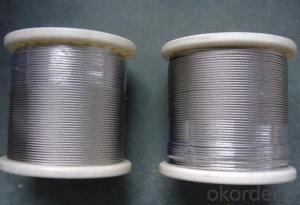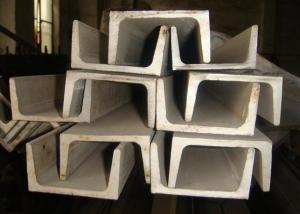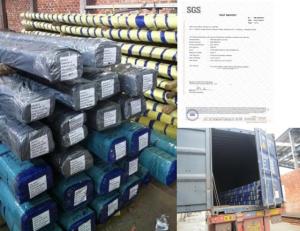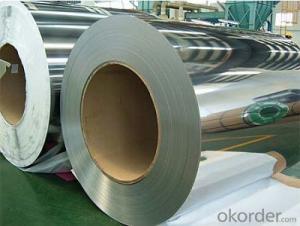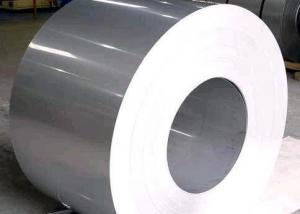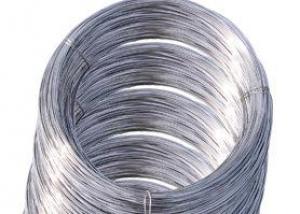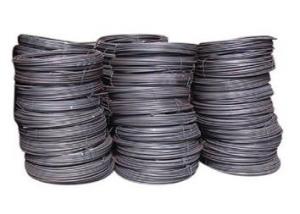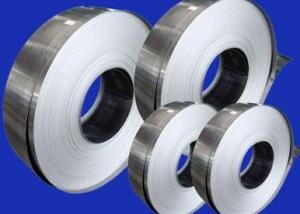Wire Galvanized Carbob Steel Wire for ACSR
- Loading Port:
- Dalian
- Payment Terms:
- TT OR LC
- Min Order Qty:
- 5 m.t.
- Supply Capability:
- 10000 m.t./month
OKorder Service Pledge
OKorder Financial Service
You Might Also Like
Item specifice
Wire Galvanized Carbob Steel Wire for ACSR
Quick Details
Steel Grade: | steel | Standard: | AISI, ASTM, BS, DIN, GB, JIS | Wire Gauge: | 1.24-5.50mm |
Place of Origin: | China (Mainland) | Type: | Galvanized | Application: | Manufacturing |
Alloy Or Not: | Non-alloy | Special Use: | Cold Heading Steel | Model Number: | wire galvanized steel for acsr |
Brand Name: | CNBM | wire galvanized: | wire galvanized steel for acsr |
Packaging & Delivery
Packaging Details: | Coil with plastic outside or according to customer's requirement. |
Delivery Detail: | 20 working days after receiving your order. |
Wire Galvanized Steel for ACSR
1. Material: Q195,Q235,45#,60#,65#,70#,72B,80#,82B,65Mn
2. Surface Coating: Galvanized
3. Characteristic: High tensile strength,small tolerance
Shiny surface, good corrosion prevention
4. Packing type:Spool or Coil
5. Application: Being used for stranded conductors in overhead power circuitry
6. Remarks during use and handling:
a. During transportation, handle softly and carefully, avoid bumping and damaging the steel wires. Moisture and rain prohibited. Steel wires must be stored in dry and well ventilated indoors
b. Pay attention to the direction of steel wires when paying-off. Be sure the spool or coil is rotating freely as to achieve identical tension of all the steel wires
c. In case of batch usage, the remaining should be repacked to avoid oxidizing of the surface
Technical parameters
Wire dia: 1.24-5.5mm; Tensile Strength:1290~1340Mpa
Nominal diameter (mm) | Tensile Strength | Stress at 1% Elongation | Twist | Elongation | Standard |
mm | Mpa | Mpa | Times/360° | Lo=250mm | |
1.24~2.25 | ≥1340 | ≥1170 | ≥18 | ≥3.0% | As per GB,EN,IEC,JIS,ASTM standard, as well as customer's request |
2.25~2.75 | ≥1310 | ≥1140 | ≥16 | ≥3.0% | |
2.75~3.00 | ≥1310 | ≥1140 | ≥16 | ≥3.5% | |
3.00~3.50 | ≥1290 | ≥1100 | ≥14 | ≥3.5% | |
3.50~4.25 | ≥1290 | ≥1100 | ≥12 | ≥4.0% | |
4.25~4.75 | ≥1290 | ≥1100 | ≥12 | ≥4.0% | |
4.75~5.50 | ≥1290 | ≥1100 | ≥12 | ≥4.0% |
NOTE:Providing engineer design as per cstomer's request.
Picture
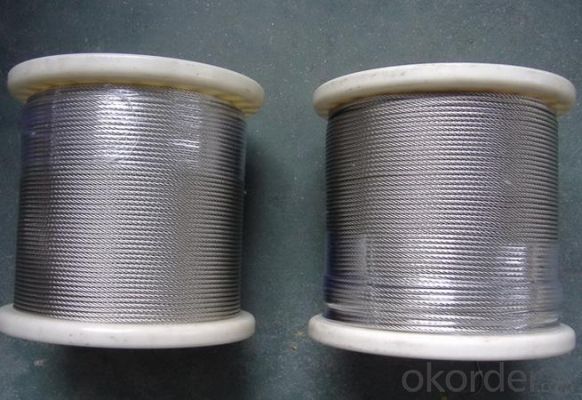
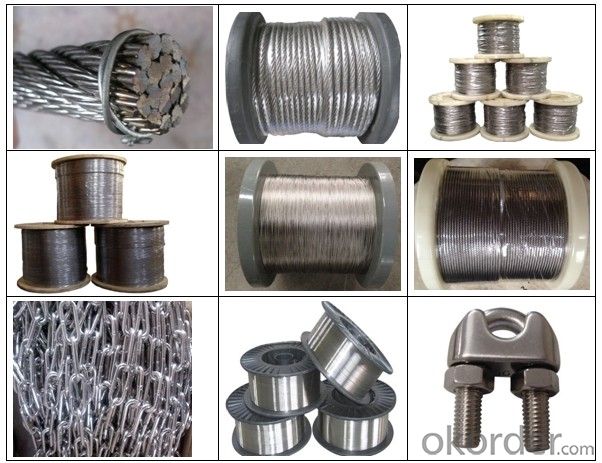
- Q:How does stainless steel wire perform in abrasive environments?
- Stainless steel wire is highly regarded for its exceptional performance in abrasive environments. Due to its unique composition and structure, stainless steel wire exhibits remarkable resistance to wear, corrosion, and impact in such conditions. It is primarily composed of iron, chromium, and other alloying elements that form a protective layer on the surface, known as a passive film. This passive film acts as a shield against the abrasive particles, preventing direct contact with the underlying metal and minimizing the chances of degradation. The chromium content in stainless steel wire plays a crucial role in its performance in abrasive environments. It forms a thin oxide layer on the surface, which enhances the wire's resistance to corrosion and wear. The presence of other alloying elements, such as nickel and molybdenum, further enhances its resistance to pitting, crevice corrosion, and stress corrosion cracking. Stainless steel wire also possesses excellent mechanical properties, including high tensile strength and toughness. These properties enable it to withstand the abrasive forces and impacts encountered in harsh environments. Additionally, stainless steel wire maintains its integrity even at elevated temperatures, making it suitable for applications in extreme conditions. Furthermore, stainless steel wire is highly versatile and can be manufactured in various grades and sizes to cater to specific requirements. This allows for customization based on the specific abrasive environment, ensuring optimal performance and longevity. In summary, stainless steel wire performs exceptionally well in abrasive environments. Its corrosion resistance, mechanical properties, and ability to withstand wear and impact make it an ideal choice for various applications, including industries such as mining, construction, marine, and aerospace.
- Q:What are the different types of stainless steel wire ropes used in power transmission?
- There are several types of stainless steel wire ropes used in power transmission, including 1x19, 7x7, and 7x19 constructions. Each type has its own unique characteristics and is suited for different applications. The 1x19 construction is known for its high strength and resistance to corrosion, making it ideal for heavy-duty power transmission. The 7x7 construction is more flexible and is commonly used for less demanding power transmission tasks. The 7x19 construction offers a balance between strength and flexibility, making it versatile for various power transmission applications.
- Q:What are the different wire mesh patterns available for stainless steel wire?
- There are several different wire mesh patterns available for stainless steel wire, each designed to serve specific purposes. The most common patterns include: 1. Plain Weave: This is the simplest and most commonly used pattern. It features a simple over-and-under weaving of wires, resulting in a uniform and tight mesh structure. 2. Twill Weave: This pattern is characterized by a diagonal weave, with each wire passing over two and under two wires. Twill weave provides a higher strength and durability compared to plain weave, making it suitable for heavy-duty applications. 3. Dutch Weave: Dutch weave is a type of weave that uses thicker warp wires and finer weft wires. This creates a tightly woven mesh, with a larger open area for improved filtration capabilities. Dutch weave is often used in applications that require high precision filtration, such as in the chemical and pharmaceutical industries. 4. Reverse Dutch Weave: This pattern is similar to Dutch weave but with the warp and weft wires reversed. The result is a mesh with larger warp wires and finer weft wires, offering excellent strength and high filtration capabilities. 5. Five-Heddle Weave: This pattern is characterized by five heddle frames, creating a unique crimped appearance. It provides a balanced combination of strength, flexibility, and filtration capabilities. 6. Welded Wire Mesh: In this pattern, the wires are spot welded at their intersections, creating a rigid and strong mesh structure. Welded wire mesh is commonly used in industrial applications, such as fencing, construction, and reinforcement. These are just a few examples of the different wire mesh patterns available for stainless steel wire. Each pattern offers distinct characteristics and advantages, making it important to choose the right pattern based on the specific application requirements.
- Q:How long does stainless steel wire last?
- Stainless steel wire is known for its excellent durability and corrosion resistance, making it a highly reliable option for various applications. The lifespan of stainless steel wire can vary depending on several factors such as the environment it is exposed to, the quality of the stainless steel used, and the level of maintenance it receives. However, on average, stainless steel wire can last for several decades, if not more. In indoor or non-corrosive environments, stainless steel wire can last indefinitely without showing any signs of degradation. In more aggressive environments, such as marine or industrial settings, the lifespan of stainless steel wire can be reduced, but it still outperforms other materials. Regular cleaning and maintenance can significantly prolong the life of stainless steel wire and ensure its continued functionality and aesthetic appeal. Overall, stainless steel wire is renowned for its longevity, making it a cost-effective choice for a wide range of applications.
- Q:Does a product made of some stainless steel have the same tensile strength due to its different shapes?
- Stainless steel wire features: corrosion resistance, acid and alkali resistance, high temperature resistance, not easy to wear, aging, toughness, high strength and so on. Widely used in cotton net, six angle net, conveyer belt mesh, stainless steel wire rope, crafts, cutlery and other manufacturing.
- Q:What are the different types of stainless steel wire mesh screens?
- There are several different types of stainless steel wire mesh screens available, each designed for specific applications and requirements. Some of the common types include: 1. Plain Weave: This is the most basic type of stainless steel wire mesh screen, where the wires are woven alternately over and under each other in a simple crisscross pattern. It offers excellent strength and durability, making it suitable for general-purpose applications. 2. Twill Weave: In this type of mesh screen, the wires are woven in a diagonal pattern, resulting in a tighter weave and smaller openings. Twill weave screens are commonly used for fine filtration and sieving applications where a high level of particle retention is required. 3. Dutch Weave: Dutch weave screens have a unique weave pattern where the warp wires are thicker and spaced closer together, while the weft wires are thinner and spaced further apart. This results in a more robust mesh with larger openings, making it ideal for high-pressure filtration and separation processes. 4. Reverse Dutch Weave: Similar to Dutch weave, the reverse Dutch weave has thicker weft wires and thinner warp wires. This configuration allows for better flow characteristics and higher mechanical strength, making it suitable for applications such as extrusion and polymer filtration. 5. Welded Wire Mesh: Unlike woven screens, welded wire mesh screens are made by welding intersecting wires together. This type of mesh offers a more rigid and uniform structure, making it suitable for applications that require higher strength and stability, such as security fencing and machine guarding. 6. Expanded Metal Mesh: Expanded metal mesh screens are created by cutting and stretching a metal sheet, resulting in a pattern of diamond-shaped openings. This type of mesh is highly versatile and can be used for various applications, including architectural facades, walkways, and ventilation screens. 7. Perforated Metal Mesh: Perforated metal mesh screens are made by punching or drilling holes into a metal sheet. The size, shape, and arrangement of the holes can be customized to meet specific requirements. Perforated metal mesh screens are commonly used for applications such as acoustic panels, decorative cladding, and airflow control. These are just a few examples of the different types of stainless steel wire mesh screens available. The choice of mesh screen will depend on factors such as the desired filtration or sieving characteristics, mechanical strength requirements, and the specific application in which it will be used.
- Q:Is stainless steel wire suitable for wire rope thimbles?
- Indeed, wire rope thimbles can indeed be used with stainless steel wire. The reason for this lies in the fact that stainless steel possesses exceptional durability and resistance against corrosion, rendering it a superb option for situations where wire rope thimbles will be subjected to unfavorable conditions or moisture. By incorporating stainless steel wire rope thimbles, wire ropes gain extra fortification and safeguarding, effectively preserving their structural integrity and warding off wear and harm. Furthermore, owing to their capacity to endure substantial loads and fight against rust and corrosion, stainless steel wire rope thimbles find frequent employment in marine, industrial, and outdoor settings.
- Q:It seems that stainless steel rarely asks resistance, but customers insist on asking, and they haven't found the answer for a long time. Who can provide some clues?
- Who can resist acid, alkali, salt and other corrosive effects of alloy steel known as stainless steel, mainly Fe Cr alloy.
- Q:Can stainless steel wire be used for filtration?
- Yes, stainless steel wire can be used for filtration. It is commonly utilized in various filtration systems due to its durability, resistance to corrosion, and high strength. Stainless steel wire can effectively remove contaminants and impurities from liquids or gases, making it suitable for applications in industries such as water treatment, oil and gas, pharmaceuticals, and many others.
- Q:Can stainless steel wire be used for food processing?
- Food processing can indeed utilize stainless steel wire. The reason for its popularity in this field lies in its resistance to corrosion, durability, and easy cleaning. This material does not react with food and is free from any harmful substances. Thus, it is suitable for a range of food processing tasks including sieving, straining, filtering, and conveying. It finds common usage in dairy, meat, seafood, and beverage industries. Moreover, stainless steel wire withstands high temperatures, enabling its use in ovens, grills, and other cooking equipment. In conclusion, stainless steel wire is a trustworthy and secure choice for food processing activities.
1. Manufacturer Overview |
|
|---|---|
| Location | |
| Year Established | |
| Annual Output Value | |
| Main Markets | |
| Company Certifications | |
2. Manufacturer Certificates |
|
|---|---|
| a) Certification Name | |
| Range | |
| Reference | |
| Validity Period | |
3. Manufacturer Capability |
|
|---|---|
| a)Trade Capacity | |
| Nearest Port | |
| Export Percentage | |
| No.of Employees in Trade Department | |
| Language Spoken: | |
| b)Factory Information | |
| Factory Size: | |
| No. of Production Lines | |
| Contract Manufacturing | |
| Product Price Range | |
Send your message to us
Wire Galvanized Carbob Steel Wire for ACSR
- Loading Port:
- Dalian
- Payment Terms:
- TT OR LC
- Min Order Qty:
- 5 m.t.
- Supply Capability:
- 10000 m.t./month
OKorder Service Pledge
OKorder Financial Service
Similar products
New products
Hot products
Hot Searches
Related keywords

